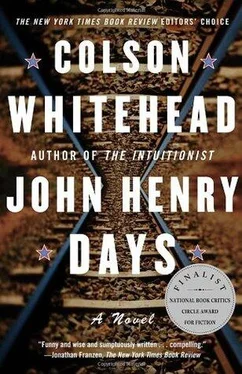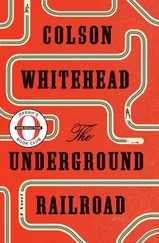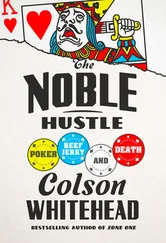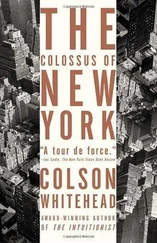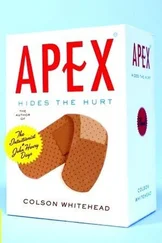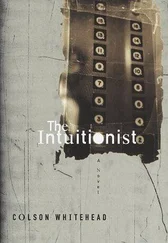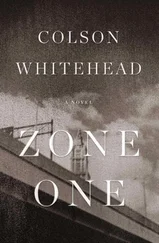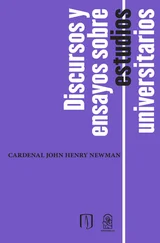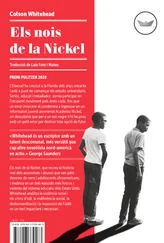As he did every morning to prepare for crowds, he turned the sign in the window from closed to open. The landlord had refused his appeal to hang a larger sign, something more grand and appropriate to the venture, for what he had assembled behind that sooty unassuming brick. The landlord was trying to spruce up the brownstone, people were returning to Harlem, new vigor in the streets of Harlem, and the schemes of the tenant ran counter to the schemes of the landlord. If the landlord had been less busy, he’d have looked up zoning regulations re the legality of running a so-called museum out of a residence. Surely there were laws. But he never got around to it. For now he let the old man put the sign in the window, and figured it was only a matter of time before the old man died and plaster and drywall split the first-floor apartment into two rental units.
At the head of the crimson stoop, up those steps, next to buzzer number one, he had replaced the name of his family with THE JOHN HENRY MUSEUM. The modesty of the sign in the window and the southern exposure’s shower across the panes of that window conspired to dispatch the sign to obscurity. Alternately the sign hid in glare and shadows. Over time the sun drained the lettering, leaving it to specter. Seasons of rain fostered layers of black partic-ulate on the panes. Only from certain angles at certain times of day was the sign completely visible to passersby and its message observable. Thousands walked by the sign, which sat patiently in its roost on the sill of the center window, tilted against the glass for leverage. The vagaries of peripheral vision sorted the people into categories. Percentages did not notice the sign and progressed to corners; smaller percentages noticed the sign and tossed it in mental bins to join the rest of the city’s non sequiturs. A smaller percentage wondered for brief seconds what the sign might mean, but did not stop, progressing to corners and other streets.
In the front hallway on a small table the pen lay aslant, tumbling through the perfect white void of the guest book. There were the names of no one in there. Admission was free but a slim blue dish accepted contributions. He left a dollar bill in the dish to indicate procedure to crowds. On occasion he needed the dollar bill for an errand, leaving the blue dish empty for hours until he replaced it. One day he used the dollar and never returned it. For a while each time he passed the table he felt a pang but as the months passed the pang disappeared. Sometimes the doorbell rang and taking it for crowds come at last he opened his doors discovering a man or woman looking for someplace else.
Depending on the time of day the music for crowds came from one of many sources. In the morning he played the earliest recorded versions of the song on a tape deck. These songs were distinguishable by the faraway cast of the singing and strumming, emanating as if from deep within a pit or tunnel. Music historians had recorded the songs on primitive equipment while they sat on porches, in backyards, in parlors, in country regions, and indeed he had on his excursions recorded some himself, from old men he had sought out. Around noon he switched to heavy 78s, sliding them carefully from yellow flaking sleeves. He cranked up the Victrola and let the needle etch the songs into the air. And so on, through a short history of home music technology, a 33 rpm turntable, an eight-track tape player for the novelty of the gawky machine, more cassette tapes and CDs on their respective playback machines. Through the rooms of the museum work songs, folk songs and the blues resounded, dead voices pinioned across an array of instruments.
It had been his original scheme to present the song to the crowds in concordance with how it shambled through the decades, hopping off a boxcar in this place and reappearing with new boots in that place, but of course it was impossible. Some of the oldest versions in his possession existed only on cassette, throwing off the chronology. A few specialty houses had released versions of compilations of regional folk music, and these he was forced to play on his CD player. He didn’t have a piano, let alone a player piano, and thus could not represent the contributions of sheet music and music machines to the transmission of the ballad except as pieces of paper behind glass. The replacement of one form of technology by a superior form was an exhibit in itself, and he wished he could have presented it to crowds in a better way. Over time as he waited for crowds the accumulation of aches in his body put an end to his daily hustle from switch to switch, machine to machine, and he recorded a master tape that simply and conveniently played the songs in chronological order. He lined up the music devices in a row, with little tented slips describing their impact on the dissemination of the John Henry legend, displaying the stillborn e’s of his typewriter as a subexhibit. In his speech he could elaborate on the theme of the march of technology and the march of progress and the prices paid. In the end what was important was not the machine but the man.
The speech slept in his mouth. He had composed the speech over many years, for each new item required a deep caption to situate it in the collection. Each time his hand touched the new acquisition, a railroad implement, a photograph of the tunnel’s inauguration, the speech extended its heading. Extolling, explicating, making gentle asides. He practiced hand motions and gestures, where his arms swept across exhibits, the panorama of his accumulations, and perfected the timing of puns. In the speech he presumed no prior knowledge in the crowds. He started at the beginning. He would walk from room to room as he delivered the speech and the disposition of each room colored the words of the speech. In the music room, among the exuberant plenitude of the song, as if among all the men and women who had sung it, the ragged American chorus, the speech transformed into a declaration on the power of the legend to draw so much from so many and find in so many souls one name. In the document room the brittle assortment of materials, from old C&O requisition lists to blueprints of the Burleigh steam engine to out-of-print scholarly researches, withered the speech in kind, the ink grew faint, the truth of the tale distant, scattered by contradiction and time, words drifting through the air as mere echoes of something greater. In the art room, over here, where children’s books lay on stands there and there, have a look, pages open for perusal of larger-than-life adventure, the sign says you’re allowed to touch them, the walls have disappeared into thin white lines for all the paintings and posters of martyrdom, triumph and sadness crammed together, see how you can barely see an inch of the walls, the speech trembling with new comprehension, all those artists lending feverish strength to the words, feeding the speech with their labors, all those elemental forces flooding through the aperture of this room. In the statue room, in here, among the figures, some as small as children and others as large as giants, the music now far away in the distance, the speech receded into sighs, into deep aphasiac awe, urging on the crowds’ contemplation of the man and this moment, seeing him for the first time in a way, in this final room after all those previous rooms, palpable, with dimensions, looming, with solid and unimpeachable weight. The speech trickled away as crowds consider John Henry in his infinite masks.
In some ways it was less of a speech and more of a story.
In the long days one after the other he pictured the crowds. The long lines of crowds, announced first by the doorbell and then the shadows of their feet beyond the door. He had seen some of them before, they had passed by his windows, or their parents had passed by his windows, their families and friends, they had patronized his store when he still had the store and he had sold them things, passed them on the street, sat next to them in public places. But if they had been in his store, he had never presented to them such indispensable items as those he had finally gathered in his museum. Those were material items and this was so much more. It had cost him so much and the crowds had finally come, a jostling hungry throng, whole neighborhoods and clans ready to receive John Henry, dawdling before the favorite exhibits that made them return again and again, alone or leading treasured friends by the hand to share revelation. Beautiful children with round faces and wide eyes who were hearing of the legendary steeldriver for the first time and learning possibility, teenagers slouching and cracking jokes to hide what they see in the man but cannot admit, adults, men and women pushed here for so many reasons, getting reacquainted with the story they first heard as children and now connecting it to every one of their hard mornings, these strivers, and the old ones, old as him, who had seen the same things he had, lingering before photographs respectful feet away, understanding the legend as he did now, as a lesson that had finally been learned at great cost, moving from room to room in recognition and resignation, all of them a family he had lost at last returned to him.
Читать дальше
Конец ознакомительного отрывка
Купить книгу
